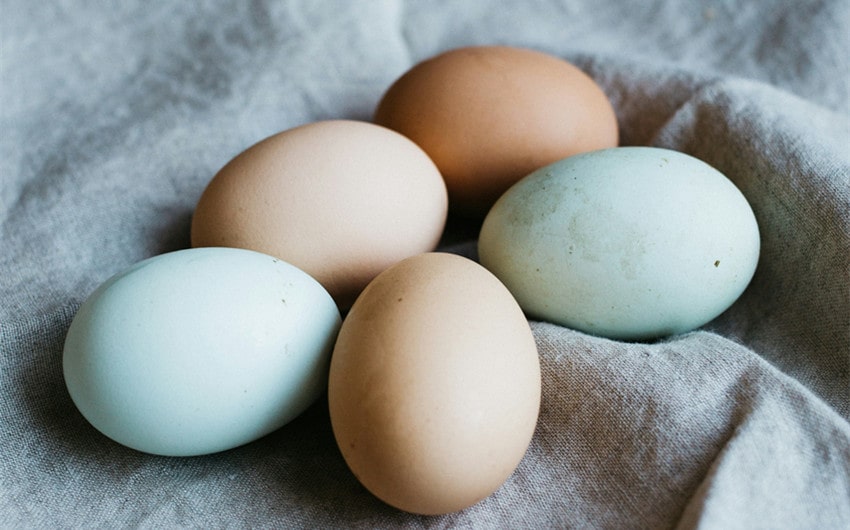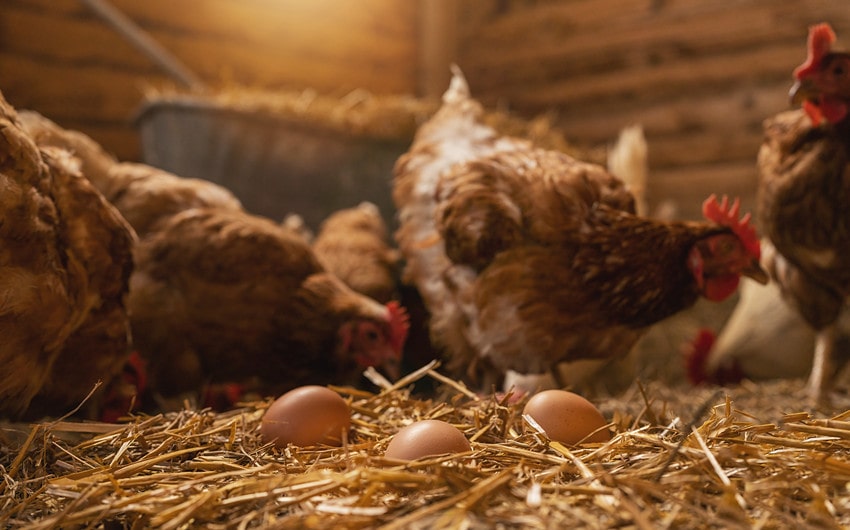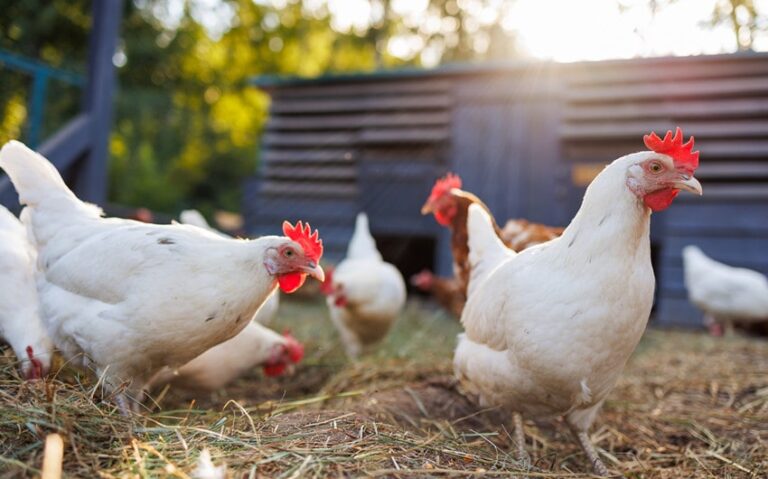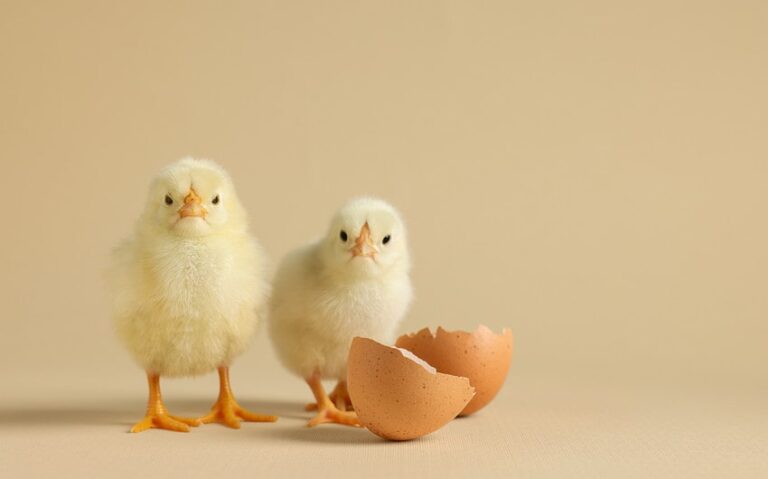How Do Chickens Get Pregnant? Unveiling the Truth About Eggs
If you’ve ever wondered, “how do chickens get pregnant?” you’re not alone—it’s a common question with a surprising answer. Unlike mammals, chickens don’t get pregnant; instead, they lay eggs that can be fertilized if a rooster is involved. Understanding how chickens reproduce can clear up a lot of confusion about where eggs come from and how chicks are born.
Whether you’re a backyard chicken enthusiast or just curious, knowing the basics of chicken reproduction helps you appreciate the fascinating way these birds bring new life into the world.
Understanding Chicken Reproduction
Chickens reproduce in a unique way that’s quite different from mammals, and understanding this process helps clarify why the idea of them getting pregnant is a misconception.
No Pregnancy in Chickens
Chickens do not get pregnant because they are birds, not mammals. Instead of developing embryos inside their bodies, hens lay eggs that can be fertilized to hatch into chicks. The reproductive process in chickens is centered around the laying of eggs, which occurs regardless of whether a rooster is present or not. Hens have an ovary that releases yolks, which then travel through the oviduct, where the egg white and shell are formed. The entire process happens externally once the egg is laid, making the concept of pregnancy irrelevant for chickens.
Role of the Rooster
For an egg to develop into a chick, it must be fertilized by a rooster. The rooster’s role in chicken reproduction is to mate with the hen and fertilize the eggs internally before they are laid. When a rooster mates with a hen, he transfers sperm, which can fertilize the yolks inside the hen’s body. This fertilization process happens before the egg is fully formed and laid. If no rooster is present, the hen will still lay eggs, but these eggs will be unfertilized and won’t develop into chicks. The presence of a rooster doesn’t affect the hen’s ability to lay eggs but is crucial for chick development.
The Mating Process
The mating process in chickens is a fascinating blend of instinctual behaviors and biological mechanisms that ensure the continuation of their species. This process involves courtship, mating, and the fertilization of eggs, each playing a crucial role in the reproductive cycle.
Courtship Behavior
Before mating, roosters engage in a variety of courtship behaviors designed to attract hens and encourage them to mate. One common behavior is the “tidbitting” dance, where the rooster struts, clucks, and picks up food, offering it to the hen as a gesture of goodwill and attraction.
Roosters may also spread their wings and perform a series of rhythmic steps around the hen to display their dominance and readiness to mate. These courtship displays are not just about attracting the hen but also about establishing trust and showing that the rooster is a suitable mate.
Hens respond to these displays in different ways, depending on their interest and receptivity. A hen that is receptive to mating will squat down, allowing the rooster to mount her. This behavior is known as the “submissive squat,” which signals to the rooster that she is ready to mate. Courtship rituals are an essential part of the mating process, as they help establish a bond between the rooster and hen, increasing the chances of successful fertilization.
Fertilization
Once courtship is complete, the actual mating process, called “treading,” occurs. During mating, the rooster mounts the hen and balances on her back while transferring sperm to the hen through a brief cloacal contact. The cloaca is an opening that serves as the exit point for the reproductive, urinary, and digestive tracts in birds. The rooster’s sperm is deposited into the hen’s cloaca, and from there, it travels up the hen’s reproductive tract to fertilize the yolks that are released from the ovary.
The process of fertilization occurs internally, often before the egg white and shell have been added around the yolk. Interestingly, a single mating session can fertilize multiple eggs, as hens are capable of storing the rooster’s sperm for up to two weeks in specialized sperm storage glands within the oviduct. This means that one successful mating can result in several fertilized eggs laid over subsequent days, maximizing the reproductive potential of both the hen and rooster.

Egg Formation Inside the Hen
The process of egg formation inside a hen is a complex and efficient biological marvel that takes about 24 to 26 hours from start to finish. This process involves multiple stages that occur within the hen’s reproductive system, specifically in the ovary and oviduct. Understanding how an egg forms provides insight into the fascinating ways chickens produce eggs, whether fertilized or not.
Ovary and Oviduct
A hen’s reproductive system is composed of an ovary and an oviduct, both playing crucial roles in egg formation. Unlike mammals, hens typically have only one functional ovary (the left one), which contains thousands of tiny ova, or yolks, that are developed throughout the hen’s life. Each yolk represents the potential start of an egg. When a yolk matures, it is released from the ovary into the oviduct, a long, tube-like structure where the egg formation process continues.
The oviduct is divided into several sections, each responsible for adding different components to the developing egg. The first part, the infundibulum, is where fertilization occurs if sperm from a recent mating is present.
If the egg is fertilized, it will continue its journey through the oviduct, but even if it’s not fertilized, the egg will still form and be laid. The yolk then moves to the magnum, the largest section of the oviduct, where the egg white, or albumen, is added. This part of the process takes about three hours and provides the egg with its primary source of protein.
Egg Formation Process
After the yolk receives its coating of egg white, it travels to the isthmus, where the inner and outer membranes are added around the egg. These membranes help protect the contents of the egg, giving it structure and helping prevent bacterial contamination. This stage lasts about an hour.
Next, the egg moves to the shell gland, also known as the uterus, where the shell is formed. The shell is primarily made of calcium carbonate and is responsible for giving the egg its hard outer layer. This stage takes the longest—about 20 hours—as the shell is developed, colored (if the hen’s breed produces colored eggs), and fortified.
Finally, the fully formed egg enters the vagina, the last part of the oviduct, where it is positioned correctly before being laid. The egg exits through the cloaca, completing its journey from ovary to the outside world. Remarkably, a new yolk is often released from the ovary before the current egg is even laid, ensuring that hens can lay eggs nearly every day under optimal conditions.
Differences Between Fertilized and Unfertilized Eggs
Fertilized and unfertilized eggs might look identical on the outside, but they are fundamentally different when it comes to their internal composition and potential for development. Understanding the distinctions between these two types of eggs can clarify why some eggs hatch into chicks while others are destined for breakfast.
Fertilized Eggs
Fertilized eggs occur when a rooster mates with a hen, allowing sperm to fertilize the yolk before the egg is fully formed. Inside a fertilized egg, the sperm and egg cell combine to form a zygote, which has the potential to develop into a chick. For this development to occur, the fertilized egg must be kept at a consistent warm temperature, typically by a brooding hen or an incubator, for about 21 days. This incubation process triggers embryonic development, leading to the gradual formation of a chick inside the egg.
While fertilized eggs can be eaten just like unfertilized ones, they often contain a small white spot called the blastoderm, which appears as a bullseye pattern on the yolk. This is the first sign of embryonic development, though it remains dormant unless incubated. Fertilized eggs are common in farm settings where roosters are present but are rarely found in grocery stores. If collected promptly and stored in a cool environment, fertilized eggs are perfectly safe for consumption and taste no different from unfertilized eggs.
Unfertilized Eggs
Unfertilized eggs are produced by hens without the involvement of a rooster, meaning no fertilization takes place. These eggs are what most people buy at grocery stores and eat daily. Since there is no sperm involved, these eggs do not have the potential to develop into chicks, regardless of how long they are kept warm. The absence of fertilization means that the egg consists only of the yolk, egg white, and shell, without any signs of embryonic activity.
Hens naturally lay unfertilized eggs regularly, driven by their biological cycle rather than mating. These eggs are a result of the hen’s reproductive process, which continues with or without a rooster. They are collected for consumption and are the standard in commercial egg production. Unfertilized eggs contain all the nutritional benefits—protein, vitamins, and minerals—without any possibility of containing a developing embryo, making them a staple food worldwide.
Key Differences in Use and Development
The most significant difference between fertilized and unfertilized eggs lies in their potential for development. Fertilized eggs can hatch into chicks if incubated under the right conditions, while unfertilized eggs cannot. This distinction is particularly important for those raising chickens for breeding versus those keeping hens for egg production alone. Fertilized eggs are often sought by those who wish to expand their flock, whereas unfertilized eggs are favored for culinary use due to their availability and simplicity.
From a consumer perspective, there’s no noticeable difference in taste, texture, or nutritional content between fertilized and unfertilized eggs. Both types can be safely consumed, and the choice between them often depends on the presence of a rooster and the intended purpose of the eggs. For backyard chicken keepers and commercial producers alike, understanding these differences ensures that they manage their flocks and egg production effectively, whether for eating, hatching, or both.

Incubation and Hatching
Incubation and hatching are crucial stages that transform a fertilized egg into a chick, requiring precise conditions and care. Whether done naturally by a hen or with an incubator, this period is vital for embryonic development.
Incubation: Creating the Right Environment: Incubation begins immediately after the egg is laid, with an optimal temperature of 99.5°F (37.5°C) and humidity levels around 50-55%. A brooding hen provides natural warmth and rotates the eggs to ensure proper development, while incubators mimic these conditions. Turning the eggs is essential to prevent the embryo from sticking to the shell membrane.
Stages of Embryonic Development: The embryo develops rapidly, forming major organs, feathers, and bones within 21 days. The yolk supplies nutrients, while the shell allows oxygen exchange. By the end of the incubation period, the chick absorbs the remaining yolk, providing energy for the first days of life.
Hatching: The Final Step: Around day 21, the chick begins hatching, using its “egg tooth” to break the shell in a process called “pipping.” This exhausting task can take several hours as the chick pecks its way out. Once free, the chick rests, dries off, and fluffs its feathers.
Post-Hatching Care: After hatching, chicks need warmth, protection, and hydration. A mother hen provides natural care, but in a brooder setup, chicks should stay warm and be given water and feed once fully dry. These initial care steps ensure the chicks grow strong and healthy.





